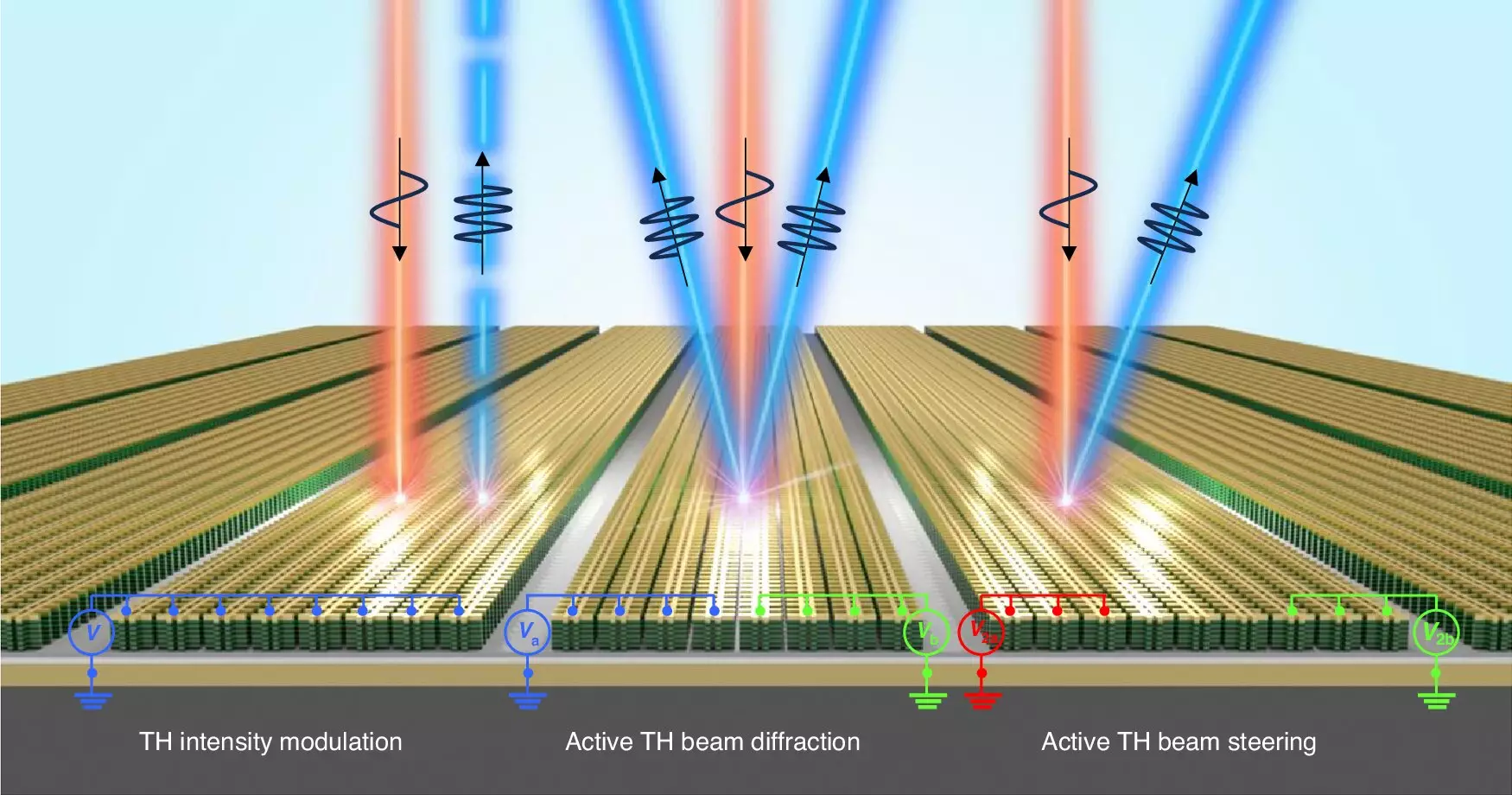Recent breakthroughs in photonics have highlighted the development of nonlinear optical metasurfaces, which are poised to revolutionize communication technologies and medical diagnostics. These ingenious structures, smaller than the wavelength of light, enable unique interactions between light and matter, facilitating the generation of multiple wavelengths from a single source. This innovative work, spearheaded by researchers at UNIST under the guidance of Professor Jongwon Lee, represents a significant leap forward in controlling light, enhancing the versatility of optical components for a wide array of applications.
The groundbreaking research illustrates the experimental implementation of electrically tunable third-harmonic generation (THG) employing an intersubband polaritonic metasurface. By integrating multiple quantum wells (MQWs), the team accomplished an impressive modulation depth of 450% in THG signals, alongside an 86% suppression of zero-order THG diffraction. This level of control over THG is particularly exceptional as it enables local phase tuning exceeding 180 degrees, paving the way for developing electrically adjustable flat nonlinear optical elements that can fulfill various functional roles.
Nonlinear optics opens up numerous possibilities by generating new wavelengths vital for modern information transmission. Traditional lasers typically utilize single wavelengths; however, the newfound capabilities offered by this metasurface technology could sharply increase the efficiency and capabilities of optical devices. An everyday application of nonlinear optics can be seen with green laser pointers, but the advantages of electrically controllable optics extend far beyond simple consumer devices.
The implications of creating ultra-compact and lightweight optical instruments cannot be overstated. The research suggests that future laser devices could become remarkably thin, potentially as light and flexible as paper—employing materials thinner than human hair. Where previous approaches faced challenges in electrical modulation, this metasurface technology stands to transform the landscape, allowing electronic control of optical phenomena seamlessly.
One of the standout features of this research is the introduction of the first-ever voltage-controlled second-harmonic generation (SHG), allowing precise modulation of both intensity and phase of THG. This capability opens new avenues for applications in various sectors, from cryptography to advanced holography, enhancing what is possible in quantum sensors and communication light sources. According to Professor Lee, such advancements enable unprecedented manipulation of light, essential for future technological applications.
The research team emphasized the significance of the semiconductor layer and metal structure in defining the optical properties of their metasurface. By strategically designing these elements, they have created a platform that engages with light in innovative ways. As researchers like Seongjin Park delve deeper into the interplay of these materials, we may uncover further enhancements to the capabilities of metamaterials, reminding us that the physical systems which define the metasurfaces play a critical role in determining their overall performance.
The innovative strides taken in nonlinear optical metasurface technology mark a crucial turning point in the fields of photonics and quantum communication. By leveraging the principles of nonlinear optics and advancing electrical tunability, researchers have set a foundation that not only enhances our understanding of light-matter interactions but also opens up realms of possibilities for future technology. As we stand on the cusp of this new optical revolution, the potential for applications in advanced laser systems and communication devices is both inspiring and exciting. The future of light manipulation looks brighter than ever.


Leave a Reply